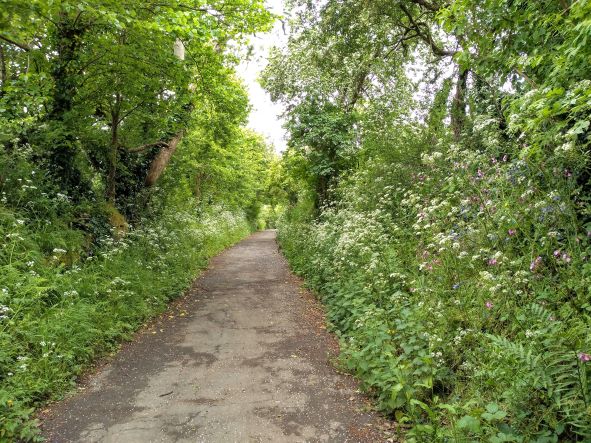As National Tree Week runs from 26 Nov to 4 Dec, we want to share some top tips with you about hedgerow trees.
Hedgerows (commonly forming hedgebanks in the South West) are semi-natural habitats which in combination form one of the largest semi-natural habitats in the UK.
When these interconnecting corridors are managed appropriately they provide a multitude of benefits including:
- Reducing flood risk by intercepting and soaking up rainwater
- Slowing surface flow and improving infiltration
- Helping to prevent erosion by stabilising soils through their root systems
- Providing natural field boundaries, dappled shading and shelter for livestock
- Supporting native biodiversity and providing wildlife corridors
Understanding the lifecycle of a hedgerow is important in determining the management of any particular hedgerow / hedgebank.
A major boost for biodiversity can be achieved by cutting hedgerows on a two yearly (or ideally three yearly) cycle. This rotational management results in significant increases in flower and berry production.
The life of a hedgerow can be extended through good management, but once it has reached a certain point, rejuvenation is needed through coppicing or laying and potentially ‘gapping up’.
For more detailed information including the top 10 tips for hedge management visit Hedgelink.
Good structural diversity in a hedge can be achieved by cutting at different heights and including ‘Standards’ also known as hedgerow trees.
These can provide shelter, food, nesting sites and song posts, as well as stepping stones between woodland habitats, and make a valuable contribution to the landscape. Here are some top tips for establishing ‘Standards’/ hedgerow trees:
- You can encourage new trees by selecting and marking promising saplings or stems to grow on or by new planting.
- You should carry out work between 30 September and 31 March to avoid disturbing nesting birds; planting is best from mid to late November to end of March when the trees / hedgerow is dormant.
- Plant your hedge row trees in irregular spacing with at least 20m between them to allow for full crown development.
- Choose native species at least 2 metres tall.
- To improve survival chances, plant each tree in a pit, deep and wide enough to contain the full depth and width of the root system.
- Guard, stake and tie each tree securely, using material appropriate to the size and species of the tree.
- Maintain guards, stakes and ties until the tree is established and dispose of responsibly when no longer required.
At Westcountry Rivers Trust we can provide advice, support, and guidance on hedge management, particularly where there are water quality and freshwater habitat benefits.
Where possible, we can support with funding for tree whips to ‘gap up’ hedge rows and for the creation / maintenance of riparian buffer strips.
Why not find out if you are eligible for the Upstream Thinking Free Trees offer for the 2023 -2024 planting season, just the relevant catchment farm advisor via their details at wrt.org.uk/project/ust-3-farm-advisors/.
We can also support with access to other funding for hedge coppicing, hedgerow laying and other appropriate management options.

